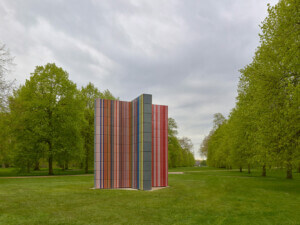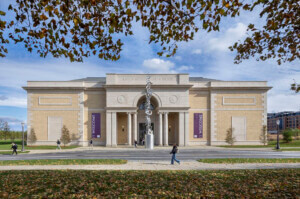America’s oldest artist-advocacy organization, the National Academy of Design, has decided to permanently close its museum operations. The Beaux-Arts mansion at 1083 Fifth Avenue on the Upper East Side has been sold, and the institution is reinventing itself with an endowment.
Run by artists for artists since 1825, the Academy is comprised of invite-only members, a whos-who list of many of the biggest names in American art. For most of the institution’s history, each member was also required to donate to the Academy’s collection, meaning that the NAD has pieces by American greats like Robert Rauschenberg, Jasper Johns, and Thomas Eakins. This collection made for groundbreaking shows that produced world-class art historical scholarship. But what about the living members?
Previously, the academy had been aligned with both its own museum as well as a well-respected art school, but now the NAD has now cut ties with both.
“The museum and school were draining all the resources,” Walter Chatham told the Art Newspaper. An architect who has served as co-chair of the Board of Governors since 2014, Chatham added, “There wasn’t any money for the programs that would actually improve the academicians’ lives. Eventually we want to get back into education and exhibitions, but I don’t think we’re going to have a museum again.”
The museum debate came to a head with the sale of two Hudson River School masterpieces, prompting condemnations and sanctions from national museum organizations like the Association of Art Museum Directions and the American Alliance of Museums. Brian T. Allen, an art historian writing for the National Review, said, “I was a member of both and supported the sanctions. My museum wouldn’t lend work to NAD shows. In retrospect, I think the penalties did the NAD a disservice.”
Unlike the sale of the paintings, the sale of the Academy’s three Upper East Side buildings leaves them with an enduring source of income—a legally restricted $66 million endowment to put towards operations that will prioritize the current academicians and living artists as the center of the Academy’s mission. The refreshed focus will hopefully help the institution that has long grappled with the “existential” question of its inherent museum-ness.
The “class” of 2018 includes artists Mel Chin, Njideka Akunyili Crosby, and Vik Muniz, who will join the over 400 other living members. Refocusing their efforts on the class of living artists isn’t the only initiative for the “new” NAD, as the academy has also begun publication of an online journal, NAD Now, which features fresh writing focused on the art and scholarship of members both past and present.
The National Academy of Design is a storied and historic institution that is emerging once again for the 21st century, and, following in the footsteps of many other renowned arts institutions making the move out of increasingly expensive Manhattan. For example, take SculptureCenter, which sold its longtime home on the Upper East Side in order to “reinvent” itself in Long Island City, Queens, and continues to thrive.
These changes are difficult for a time-honored institution’s legacy. However, in the words of Allen, “I say ‘Welcome back,’ and hope my colleagues in the American art world will do the same.”











